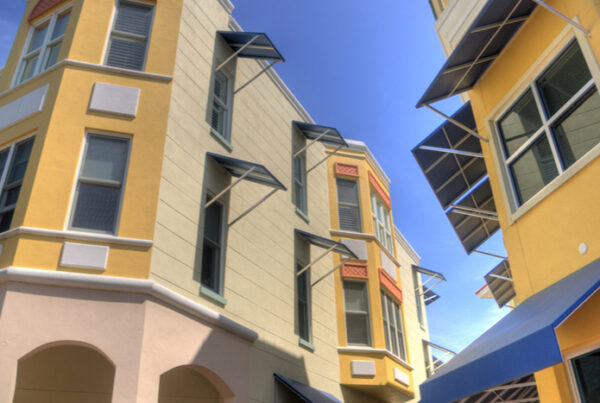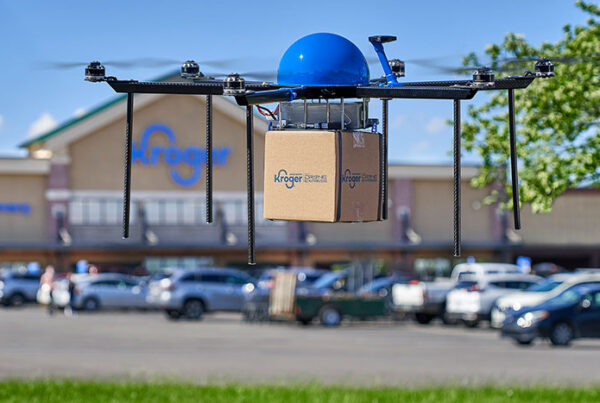
(Shutterstock)
![]() During Amazon’s much publicized search for a second headquarters outside the Seattle area, the famed coffee maker was quietly doing something similar—looking for office space for an operations hub that would eventually have more than 500 employees. Starbucks ultimately chose Atlanta, but Kansas City was also believed to be in the running.
During Amazon’s much publicized search for a second headquarters outside the Seattle area, the famed coffee maker was quietly doing something similar—looking for office space for an operations hub that would eventually have more than 500 employees. Starbucks ultimately chose Atlanta, but Kansas City was also believed to be in the running.
“They passed over us purely because they wanted 120,000 square feet [11,000 sq m] of class A office building and there was nothing to be had,” says Eric Linebarger, senior project designer with design and architecture firm HOK. “That was a huge miss for the city. When Amazon was looking for their HQ2, it came up again—the lack of any urban-based class A office space. There really is just a complete lack of it.”
HOK was retained by the commercial real estate development firm SomeraRoad to revamp and renovate a 1970s-era office building known as City Center Square. When first opened, the 30-story structure—also home to an indoor shopping mall and food court—was one of downtown Kansas City’s standout office towers. It eventually became a hub for many of the city’s law offices.
But after a half century, the building began to show its age. When SomeraRoad acquired the building, it was only 40 percent occupied and the food court was down to just two vendors.
The building’s situation was not unique. As is true of many American cities, much of the Kansas City region’s office space is in the suburbs. In Kansas City’s case, small cities and townships like Overland Park and Lee’s Summit have 20 million square feet (1.9 million sq m) of office space, compared with only 5 million square feet (465,000 sq m) in the central city.

The $16 million transformation of the musty old tower included installing a light well to bring sunshine into the heart of the building and a “communicating stair” between the elevator banks to facilitate collaboration and social interaction. (HOK)
SomeraRoad believes an untapped market exists there, even in the face of the COVID-19 pandemic. Across Kansas City, a relative resurgence in downtown living prompted investment in condominium, hotel, and higher-end rental buildings. But the office sector remained relatively moribund, populated by buildings not updated since at least the 1990s even as smaller tech companies flocked to the city center to take advantage of the youthful workforce.
“It’s going to be different industry by industry and region by region, but I think Kansas City is different from markets like New York City and Los Angeles,” says Ian Ross, founder of SomeraRoad. “Financial services have figured out that they don’t need everybody in the office, but in tech it’s different: they will continue to grow and take more space.”
SomeraRoad obtained the building in 2019, and construction began that year. The company decided to invest in transforming City Center Square into Lightwell because its vacancy rate in 2019 made starting over with a blank slate much easier. The extensive renovation efforts were aided, in a way, by the onset of the pandemic, which left the building emptied of employees.
“COVID aligned with our business plan because it allowed us to put our head down and finish construction,” Ross says. “Now, we’re emerging from COVID and we have this amazing product that outmatches our competition downtown. If you’re going to be bringing everybody back into the workplace, you want something special and unique that really draws you in.”
The company’s $16 million transformation of the musty old tower included installing a light well to bring sunshine into the heart of the building and a “communicating stair” between the elevator banks to facilitate collaboration and social interaction. A fitness center and “breathing wall” to enhance indoor air quality will enhance the space as well.
Lightwell also ensures that its abundant amenity spaces are not just for those who work there. An outpost of the Contemporary Art Museum St. Louis is located on the ground floor, along with a Made in KC Cafe coffee shop. (“Starbucks didn’t really fit what we were going for,” deadpans Ross.) Although tenants have not yet been announced, a contemporary food hall will round out the retail offerings.
The bulk of the building’s more than 650,000 square feet (60,000 sq m) will still be devoted to office and meeting space, but this, too, will be of a different order than what came before. There are conference rooms ranging in size from one that can accommodate as many as 60 people to smaller spaces for gatherings of four to 12 people. An old bank vault was turned into a conference center for the fanciest events. In addition to suites of customizable offices that can be rented by companies, a lot of attention will be given to co-working spaces, which are expected to see a boom coming out of the pandemic. For tenants there is also an exclusive lounge with a pool table, bar, and state-of-the-art stereo system.

The bulk of the building’s more than 650,000 square feet (60,000 sq m) will still be devoted to office and meeting space, but this, too, will be of a different order than what came before. (AREA Real Estate/HOK)

The developers of Lightwell are making a big bet on what workers and companies will look for after the pandemic. And the answer, they project, will be that they will look for what they missed in 2020.
“A lot of our research looks at the post COVID workforce, and we find it’s going to be much more about social gathering and social interaction—allowing for collaboration, mentoring, and peer-to-peer interaction to happen,” says HOK’s Linebarger.
So far, that bet seems to be paying off. The first company to sign on, a provider of back-end infrastructure for automobile sales, booked space for its headquarters before construction even started. By early 2021, about 70 percent of the office space was leased, before the grand opening had even occurred.
Lightwell intends both to retain the clients from the old City Center Square building and bring in more technology companies. That strategy has succeeded so far: the reconstituted structure can attract both start-up tech companies to its affordable coworking spaces and Kansas City’s more mature companies. Many of the companies are located at the Crossroads, a historic arts and former warehouse district about four blocks south of downtown. But the neighborhood has already been heavily developed, leaving little space for companies to grow further.
“Many of these tech firms would like to remain in Crossroads, but there isn’t any product,” says Tim Schaffer, president of AREA Real Estate Advisors. “But they have to remain downtown because that’s where their employment base is, so we’re providing them with a much-needed new option.”
Much of Lightwell’s future will be determined by the larger questions of the return to work and whether white-collar office jobs come back in full force. But if Ross’s calculations about technology companies are accurate and in-person collaboration retains its premium valuation, the gamble should pay off.
For his part, Linebarger believes that smaller cities, far away from the superstar hubs, could attract more higher-income workers in the post-pandemic era. The allure of paying top dollar for tiny amounts of living and working space may have been permanently altered by the pandemic, giving some advantage to smaller urban centers like this and to further office renovations like Lightwell.
“For me, the pandemic underscored this idea of a migration to smaller cities,” says Linebarger. “The cost of living is less, people can own homes as opposed to 600-square-foot [56 sq m] [rentals]. Maybe the post-pandemic world is going to greatly impact the marketability and the desirability of some of these kinds of tier-two, -three, or -four urban environments.”



